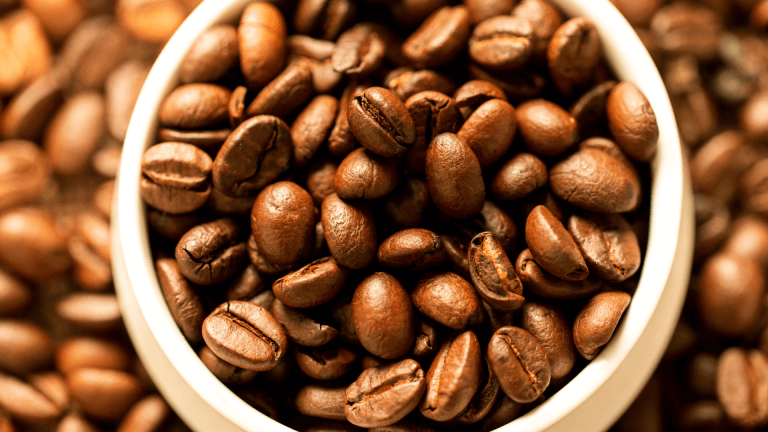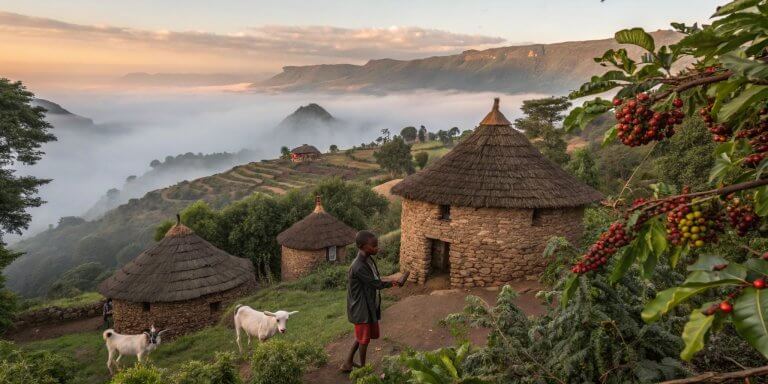
Caffeine, a natural stimulant, is a product of the remarkable diversity of over 60 plant species across the globe. Each of these plants produces caffeine for specific evolutionary purposes.
What Is Caffeine and Where Does It Come From?
Caffeine isn’t just your morning wake-up call. It’s actually a natural defense system that plants developed over 100 million years ago.
You’ll find this bitter, white compound in over 60 plant species around the world. These plants don’t make caffeine for us. They create it to protect themselves from hungry insects and attract helpful pollinators.
Here’s what makes caffeine fascinating: plants use it like a natural pesticide and memory booster rolled into one. When bees drink nectar with small amounts of caffeine, they remember that flower three times better. It’s nature’s way of ensuring loyal customers.
Why Plants Make Caffeine (And Why You Should Care)
Plants produce caffeine for two main reasons that directly affect your daily cup:
This natural purpose explains why caffeine affects you the way it does. The same compound that protects plants from threats gives you alertness and energy.
Understanding where caffeine comes from helps you make better choices about your daily intake. Different plants produce different amounts and types of caffeine compounds. Some provide smooth, sustained energy while others hit fast and fade quickly.
The concentration varies dramatically, too. Cacao contains just 0.2% caffeine while guayusa packs an impressive 7.6%. This variation reflects each plant’s unique environment and survival needs.
Primary Natural Sources of Caffeine
Most of the caffeine you consume comes from a handful of plants—each with its own flavor, strength, and history.
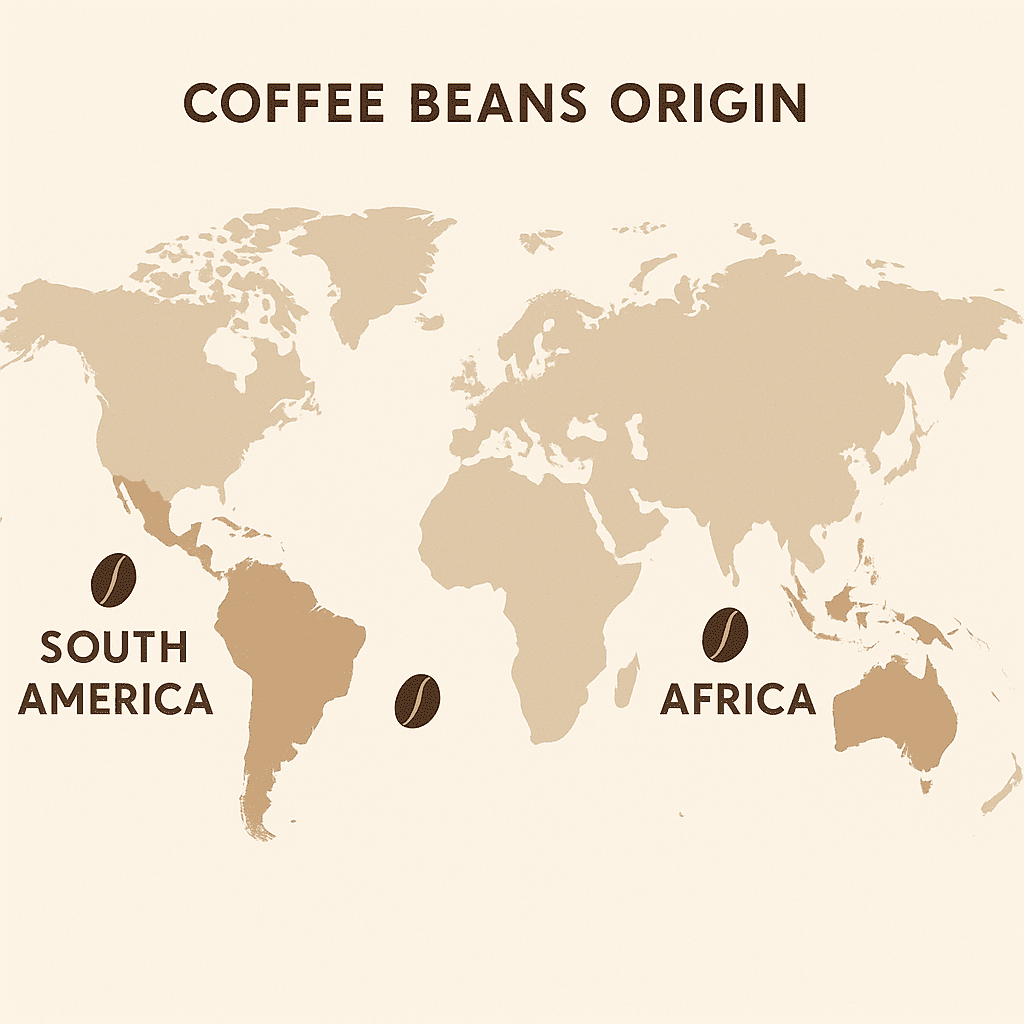
Coffee origins and caffeine content
Coffee dominates global caffeine use. Arabica beans contain about 1.2–1.5% caffeine by dry weight, while robusta packs 2.2–2.7% thanks to its evolution in harsher climates that demanded stronger defenses. An 8-ounce cup of brewed coffee typically delivers 70–120 mg of caffeine, depending on bean type, roast level, and brewing method.
Tea leaves (Camellia sinensis) rank a close second, at 3–4% caffeine by dry weight. Black tea undergoes complete oxidation, which often yields higher caffeine and bolder flavors. Green and white teas undergo light processing, resulting in slightly gentler caffeine boosts. High-altitude teas—like Darjeeling or Ceylon—often contain more caffeine because cool, stressful growing conditions trigger extra defense compounds.
Beyond coffee and tea, several other plants offer significant caffeine:
Each source delivers caffeine differently. Coffee’s quick-hit boost contrasts with guarana’s steady energy release, while tea often combines moderate caffeine with soothing antioxidants. Choosing the right source comes down to the kind of pick-me-up you need.
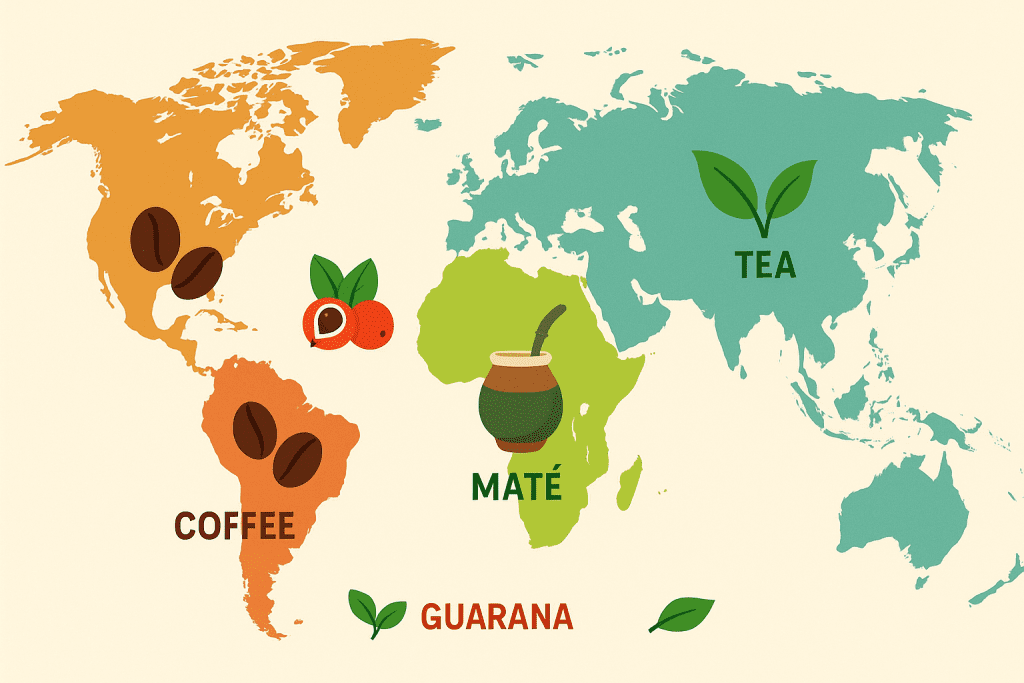
Global map of caffeine plant origins
Geographic Origins of Caffeine Plants
Caffeine-producing plants evolved across three major regions—Africa, Asia, and South America—each shaping unique species and traditions.
African Origins: Coffee and Kola
Coffee first thrived in Ethiopia’s highlands, where wild Coffea arabica still grows. Arabica evolved 1.2–1.5% caffeine to fend off highland pests. Coffea robusta, native to Central and West Africa, is adapted to harsher climates with 2.2–2.7% caffeine.[1] Kola nuts (Cola acuminata, Cola nitida) originated in West African rainforests. They contain 1.5–2% caffeine and served ceremonial roles long before cola beverages existed.
Asian Origins: Tea
Camellia sinensis is native to Southwest China’s misty forests. Over 4,000 years, Chinese growers refined green, black, white, and oolong teas by varying oxidation and firing. High-altitude regions like Yunnan and Darjeeling produce leaves with elevated caffeine levels because cooler, stressful climates boost defense compounds.
South American Origins: Yerba Mate, Guarana, Guayusa
South America’s Amazon basin hosts yerba mate (Ilex paraguariensis), guarana (Paullinia cupana), and guayusa (Ilex guayusa). Indigenous communities used:
Guarana berries reach 3.6% caffeine; guayusa tops 7.6%, reflecting intense rainforest pressures.
How Caffeine Is Extracted and Processed
From bean to beverage, extraction methods shape caffeine levels and flavor in your drink.
1. Coffee Roasting and Brewing
Coffee beans undergo roasting to unlock oils and aromas. Light roasts preserve more caffeine; dark roasts taste bolder but can lose some caffeine during long roasting. Brewing methods also matter:

Popular coffee brewing methods
2. Tea Processing and Steeping
Tea leaves follow specific steps—wilting, rolling, oxidation, and drying—to create black, green, white, or oolong varieties. Steeping time and water temperature control caffeine release:
3. Supplement and Extract Production
Caffeine supplements and energy shots use industrial extraction:
Each process affects purity and side flavors. Supercritical CO₂ typically delivers 99.7% pure caffeine, favored in pharmaceuticals. Solvent methods can leave behind trace compounds that affect the taste of energy drinks.
Health Impacts of Caffeine: Benefits and Risks
Caffeine offers clear perks in moderation but can backfire if you overdo it.
Benefits of Moderate Caffeine Intake
Here’s what matters most when you drink caffeine wisely:
Studies show 200–400 mg of caffeine daily can sharpen mental clarity and physical stamina without significant downsides. Athletes often rely on a 3–6 mg/kg dose before workouts to tap into caffeine’s endurance edge.
Risks of Excessive Caffeine Use
Here’s why too much can trip you up:
Consuming over 400 mg in one day raises the odds of those side effects. People sensitive to caffeine—or with conditions like acid reflux—might feel symptoms at lower doses, around 200 mg.
Finding Your Sweet Spot
What’s the right amount for you? Consider these tips:
Balancing benefits with risks ensures caffeine works for you, not against you.
FAQ
Conclusion and Next Steps
Caffeine’s journey from plant defense to daily ritual gives you both energy and choice. Whether you sip coffee, steep tea, or try a supplement, knowing where caffeine comes from helps you match your routine to your goals.
Here’s how to move forward:
With this guide, you’re set to harness caffeine’s power wisely.

